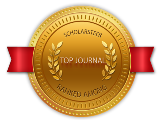Design of Split Water Tank Air Cooler (SWTAC) for Compactness and Portability
Pages : 200-202, DOI: https://doi.org/10.14741/ijcet/v.14.4.1
Download PDF
Abstract
An evaporative cooler is a device that cools air through the evaporation of water. The Evaporative cooling is one of the earliest methods employed by men for conditioning their houses. An air cooler is a device that uses water and air to cool down a room or an area. It works on the principle of evaporation, which is the process of converting liquid water into vapor. When water evaporates, it absorbs heat from the surrounding air and lowers its temperature. This is how an air cooler cools the air. An air cooler has a water tank or a water connection, where water is supplied and stored. A fan or a blower is attached to the air cooler, which draws in the hot and dry air from the surroundings and pushes it through a wet pad or a water tray. The water in the pad or the tray evaporates, and the air becomes cool and moist. The cooled air is then released into the room or the area through a vent or a duct. The main parts of an air cooler are water tank, cooling pad, fan or blower, water pump. Air coolers are provided with a water tank which stores the water. Higher the capacity of the Air Cooler larger is the size of tank. This makes the Air Cooler bulky and heavy when filled with water. In this paper a design is proposed with considerations of compactness and portability.
Keywords: Air cooler; Design for Compactness and portability; Split water tank air cooler (SWTAC)












 MECHPGCON, MIT College of Engineering, Pune, India
MECHPGCON, MIT College of Engineering, Pune, India AMET, MIT College of Engineering, Pune, India
AMET, MIT College of Engineering, Pune, India International Conference on Advances in Mechanical Sciences
International Conference on Advances in Mechanical Sciences  International Symposium on Engineering and Technology
International Symposium on Engineering and Technology International Conference on Women in Science and Engineering
International Conference on Women in Science and Engineering




